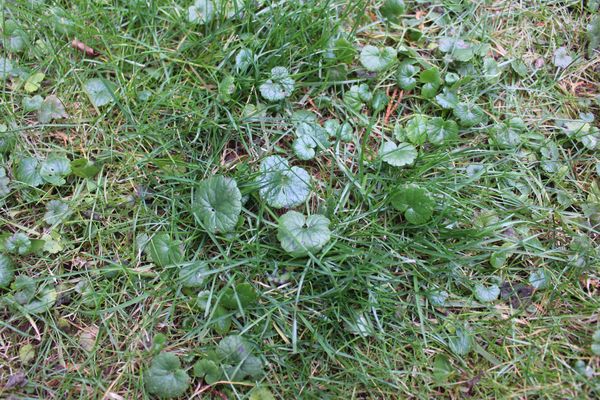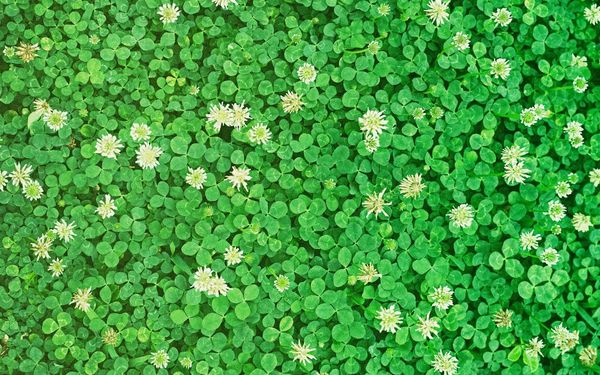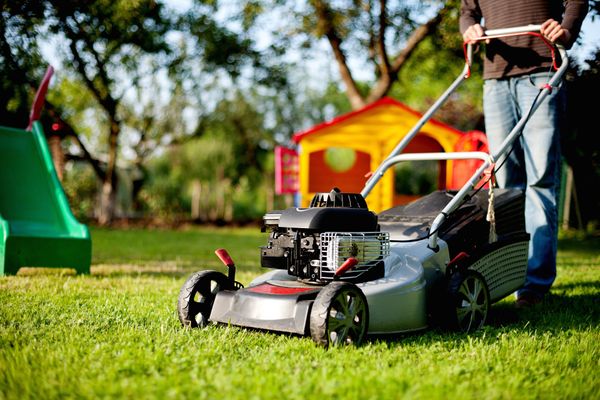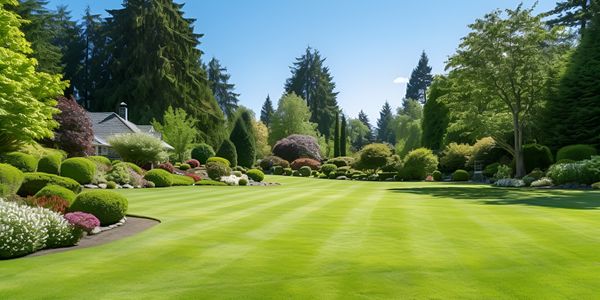Are mushrooms starting to grow in your yard? This may be a messy situation, mainly if you take delight in your lovely lawn and plants.
They are unsightly and may endanger children and animals and attract flies, which is a secondary issue. They also look bad across your lush, green grass.
Continue reading to learn the cause of the mushrooms in your yard and how to get rid of them.
Why are mushrooms growing in my garden?
If you have mushrooms in your yard, they result from airborne fungal spores landing and developing below the soil's surface, where conditions are wet, protected from direct sunshine, and rich with decomposing debris.
Having an overgrown lawn, leaf litter, grass clippings, or other organic materials lying about your yard can also provide mushrooms with the best circumstances for growth.
Mushroom Ecology
Mushrooms aid in the breakdown of organic debris in the soil into nutrients that your grass can ingest. Therefore, if you see them, organic matter is decomposing, and the ground is rich and high-quality. They are crucial in transforming organic matter into more readily available nutrients for other plants.
Animal excrement, dead grass, leaves, rotting tree trunks, underground roots, and dead animals are frequent sights in yards. These are all wonderful food sources for mushrooms, which they may utilize to make nutrients that other plants can use.
Fungi flourish best in moist, poorly draining yards and shaded lawns. Organic matter produced by a property with a lot of thatch, which retains moisture and enriches the soil with nutrients over time, can also add to the issue.
Then there are yards where pets like dogs, cats, chickens, or goats reside; the feces from these animals will supply organic materials ideal for mushroom germination.
How to Do Mushrooms Procreate and Spread?
Spores are how mushrooms propagate. Small reproductive cells, known as spores, are released by the mushroom and transported by the wind. They touch down and start fresh mushroom colonies. Marcus Roper, a UCLA researcher, explains that mushrooms produce their own 'wind' to aid in dispersing their spores. To generate cold air and water vapor, mushrooms allow some of their moisture to escape. The spores are given enough lift by this to go far. In the mushroom's natural "wind," the spores may fly up to four inches and outward.
Spores may hibernate and wait for the ideal circumstances to begin the growth of new colonies and mushrooms during dry periods or stressful seasons.
How Quickly Do Mushrooms Grow?
The mushroom is one of the creatures in your garden that grows the quickest. Small mushrooms may develop in a single day, whereas medium-sized mushrooms require around three to four days to achieve maturity. Numerous environmental conditions, including temperature and moisture content, will impact the pace of development.
How to Remove Mushrooms from Lawns
Mushrooms on your lawn may be removed in a variety of methods. For long-term success, you must adhere to these fundamental lawn care techniques since prevention is always preferable to treatment.
6 Methods for Getting Rid of Mushrooms
- Improve Lawn Drainage Mushrooms thrive in wet environments. Aerate your grass to improve drainage, and if required, replenish the soil with sand.
- Improve ventilation, light penetration, and excess moisture are achieved by dethatching your lawn and cutting it short.
- Explicit and organic materials, such as grass clippings, leaves, and other objects, enhance moisture accumulation and humidity.
- Avoid Watering in the Afternoon or Evening. Water your grass only in the morning since this produces the ideal wet environment for spores to become active overnight.
- Applying high nitrogen fertilizer will cause the organic materials that mushrooms consume to decompose more quickly, reducing the time the mushrooms may survive.
- Applying fungicide treatment to your grass can kill any latent mushroom spores hiding in the soil by penetrating the soil.
These simple methods provide the most excellent chance of long-term fungal management on your lawn. You must also take corrective action to get rid of the mushrooms in your yard if you already have them. One of the fungicidal treatments listed below may be used to do this:
How to Use Fungicide to Kill Mushrooms
The 'fruit' of a body of mushrooms growing under the earth is similar to the mushrooms you see in your yard. Spraying fungicide directly into the mushrooms will only provide a short-term fix. It may, however, be utilized to eradicate the fungi in the soil.
Fungicide
Your lawn or yard may be treated with a variety of garden fungicides that are available for purchase. Children and animals should be handled with care in yards where children and animals play. You may buy sprayer accessories that connect to your garden hose and let you squirt the troubled regions. Finally, a granular solution is also offered that you may sprinkle or spread throughout your grass area. Additionally, you may use a backpack or pump sprayer to administer the product after diluting it with water.
You ought to see the mushrooms becoming smaller over time. Since eliminating the current infestation could just be a temporary fix, you might need to take other measures to stop them from coming back.
Remove and discard any mushrooms that are readily visible to stop the spread of spores. You should also clear your lawn of any rotting waste that can encourage the development of mushrooms.
If the common domestic remedies are ineffective, you might contact a specialist to utilize more robust solutions for your grass.
How to Remove Mushrooms from Lawns Naturally
Allowing mushrooms to die naturally by finishing their life cycle is the best way to eliminate them.
When this process is finished, mushrooms will naturally die off and vanish since they grow on organic debris that is decomposing and decaying. Remove any visible sources of eating garbage, such as rotting tree limbs, old stumps, animal waste, and grass clippings. You may also frequently remove thatch using a thatching rake.
Vinegar
You may also use vinegar to eradicate mushrooms from your yard naturally. You will need to use horticulture vinegar, which is often 30–50% concentrated, as household or culinary vinegar is typically too dilute to be helpful.
To dilute the horticultural vinegar, use a 4:1 water-to-vinegar ratio. It may be placed in a spray bottle for simplicity of use. Given that vinegar at this concentration may burn skin, you should use gloves and eye protection.
Mushrooms may be killed by simply misting them with a vinegar solution. Spray cautiously since it can also damage the vegetation nearby. To see your work's impact on your lawn, you may wish to work on a test area and let it alone for a few days.
How Do Mushrooms Die From Vinegar?
The primary element in vinegar, acetic acid, gives it its well-known smell. Vinegar is an acidic material. In medical settings, acetic acid is often used to treat fungal and bacterial infections.
Corn Soda
Use baking soda for a kinder approach. Although baking soda is not a fungicide, it will assist in solving the issue by increasing the pH of the soil, which prevents the fungus from growing. It is mild, safe, and efficient, even if it is not a long-term fix.
For every gallon of water, combine two teaspoons of baking soda until it is fully dissolved. Infuse the soil around the mushrooms with the mixture. This will eventually stop future growth.
Alternately, you may sprinkle baking soda over the soil and mushrooms and then add water to mix it in. This procedure is affordable and secure for kids and dogs. However, you may need to repeat it often to notice the effects.
Remember that any significant changes to the soil's pH level might prevent nearby plants from growing.
How Does Baking Soda Kill Mushrooms?
Sodium bicarbonate, or baking soda, is another all-natural remedy for mushrooms. Spraying this substance onto fungus after diluting it with water disrupts and stops the development of the fungi. Baking soda is thus more of a prophylactic measure than a treatment.
Dish Soap
Dish soap is another quick and natural way to get rid of mushrooms.
Combine one or two teaspoons of any dish detergent sold commercially with up to three liters of water. Using a screwdriver, create openings around the mushrooms in the soil. Pour the soapy water into the openings and over the mushrooms to interrupt the fungi's underground life cycle.
You will quickly see a decrease in your mushroom colonies if you repeat this technique multiple times daily for a week. Ensuring soapy water penetrates the soil where the fungus dwells is essential to making this method effective.
Remove Mushrooms From Yard Areas
Keep it tidy.
Remove any decomposing organic matter, including leaves and dead grass clippings. If left in the yard, it will provide the perfect environment for mushroom growth.
Moisture control.
Water your lawn sparingly. It is best to irrigate the vegetation in the morning so that the sun can dissipate any superfluous moisture.
Hand-Lift Mushrooms.
When picking and discarding mushrooms, use gloves. They should not be composted since the spores will spread.
Use fertilizer with nitrogen.
This will accelerate the rate of degradation of organic substances in your soil. The mushroom life cycle will be accelerated, hastening their demise.
Do mushrooms regrow after being harvested?
Yes, after being picked, mushrooms will grow again. It's important to stress that mushrooms develop underground from a mycelium root system. So the mushroom you plucked didn't release spores to multiply. However, if a fungicide or similar treatment is not used, you can be confident that the mycelium or other mushroom spores will start growing and generating additional fungi.
Are the mushrooms on my lawn harmful?
Your yard is not endangering itself when you see mushrooms growing there. They are reasonable creatures as they can convert organic materials into nutrients your lawn can absorb.
Once the organic waste has decomposed and there is nothing left for the fungus to feed on, it won't transfer illness to your yard and will likely go.
However, over 100 kinds of poisonous mushrooms may result in various symptoms, including vomiting, stomach discomfort, and diarrhea. Some may cause the kidneys to stop functioning; the worst mushrooms can induce liver failure.
According to Harvard University, the Death Cap, also known as Amanita phalloides, is the most toxic plant.
They seem very innocent and could mimic the delectable types you buy at the grocery store.
It is crucial never to consume wild mushrooms because they are hard to detect and carry a significant danger of death or severe disease.
After consuming mushrooms, symptoms might appear between 20 minutes and 24 hours later. There may be a brief recovery interval after the first start of stomach symptoms in amanita poisoning. Septic shock, internal bleeding, and liver failure may appear a few hours or days after intake. No drugs are available right now that can lessen the effects of this toxin.
Always teach kids not to touch or eat any mushrooms they may find growing wild or in the yard. If you believe someone has consumed a mushroom, contact emergency services. If feasible, bag and carry the suspicious mushroom to aid medical personnel in making the best decision.
Common Garden Species
There are more than 10,000 varieties of fungus, many of which are entirely safe, while others may harm human health. Here is a list and photographs of some of the most popular horticultural mushrooms for identification purposes.
Identification of Lawn Mushrooms in Pictures
Comatus Coprinus
Attorney's Wig
Lawyer's Wig is sometimes called Coprinus or a shaggy ink hat. This kind of mushroom forms towering cylinders with fuzzy edges resembling wigs. This type of mushroom changes from white to inky black just before it releases its spores. It soon exudes the spores before withering and dying.
Molybdites chlorophyll
Lepiota with green spores
A hazardous grass mushroom that may harm both people and animals. It can stretch up to 10 inches but only spans 2-4 inches. A mature, thick, white mushroom with white gills that eventually become green-gray. Quite widespread throughout the country, but more so in the South. Risk to kids and animals.
Calvatia
Puffball
A puffball is a mushroom with no stems, caps, or gills. It looks like a sphere of puff. Some of them may even reach a foot in width. If you tread on it, you may be startled to see a little cloud of dark brown spores discharged from a puffball.
Mushroom Growth
Magical Rings
More than 60 different types of mushrooms may be used to create a fairy ring in your yard. A central food source, like a decaying tree stump, is the foundation of a fairy ring. The mushrooms, the visible portion of the fungus, develop in curls or waves around the food supply as they spread out beneath the earth from the stump.
Conclusion: How To Get Rid Of Mushrooms In Lawns
Discourage Mushroom Growth for All the Mushrooms
Although they won't hurt your yard, mushrooms may be ugly and dangerous to humans and animals. It is good to get remove as quickly and securely as possible for this reason.
Mushrooms sprouting in your lawn or yard can be a symptom of an excess of organic material that encourages mushroom growth. Despite the fact that mushrooms, specifically edible mushrooms, can be delightful in a cooking recipe, they may not be as delightful when sprouting all over the lawn. Taking steps to discourage their growth, such as eliminating sources of organic material, will go a long way towards maintaining a healthy, green lawn. However, remember to appreciate the role they play in breaking down organic matter, contributing to the creation of healthy soil.
Safely collecting and disposing of mushrooms in a plastic bag can help to prevent new mushrooms from spreading across the yard. If feasible, moving organic material such as fallen tree branches to a compost pile can not only keep the yard clean but also limit mushroom proliferation. Yet, keep in mind that some underground fungus, which is often the source of these mushrooms, can actually be beneficial fungi aiding in maintaining a healthy lawn.
Though it may seem counterintuitive, a completely mushroom-free yard might not be a sign of healthy soil. If you find yourself continually combating more mushrooms, it might be best to consult a professional to identify the source of the mushroom growth and find a balance that allows you to enjoy a beautiful green lawn without encouraging an unwelcome mushroom takeover.






